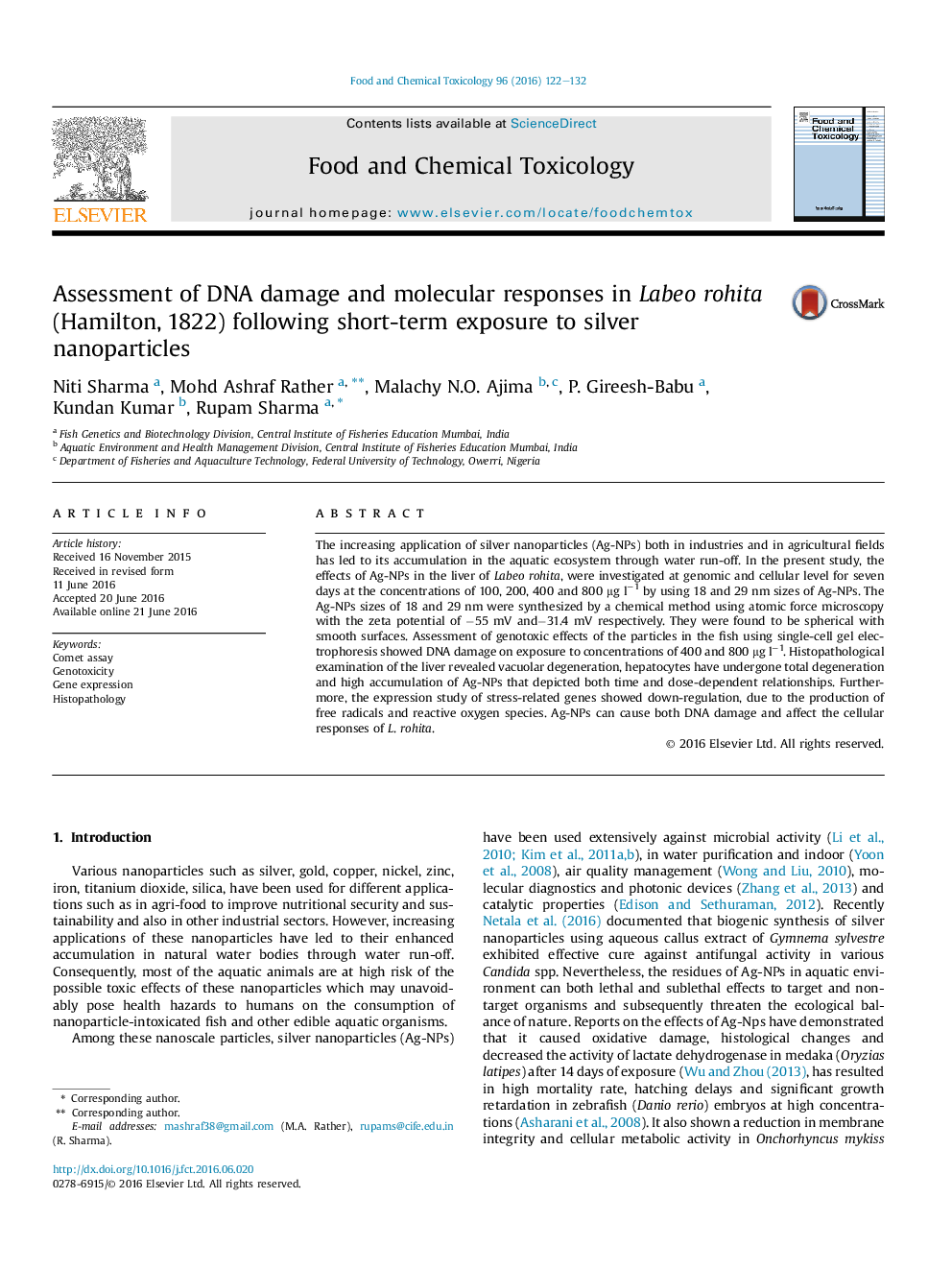| Article ID | Journal | Published Year | Pages | File Type |
|---|---|---|---|---|
| 5849199 | Food and Chemical Toxicology | 2016 | 11 Pages |
â¢Silver nanoparticles toxicity is a size and dose dependent.â¢Silver nanoparticles accumulation is increased in the liver as exposure time increases.â¢Exposure to these particles causes down-regulation of gene expression in the liver.
The increasing application of silver nanoparticles (Ag-NPs) both in industries and in agricultural fields has led to its accumulation in the aquatic ecosystem through water run-off. In the present study, the effects of Ag-NPs in the liver of Labeo rohita, were investigated at genomic and cellular level for seven days at the concentrations of 100, 200, 400 and 800 μg lâ1 by using 18 and 29 nm sizes of Ag-NPs. The Ag-NPs sizes of 18 and 29 nm were synthesized by a chemical method using atomic force microscopy with the zeta potential of â55 mV andâ31.4 mV respectively. They were found to be spherical with smooth surfaces. Assessment of genotoxic effects of the particles in the fish using single-cell gel electrophoresis showed DNA damage on exposure to concentrations of 400 and 800 μg lâ1. Histopathological examination of the liver revealed vacuolar degeneration, hepatocytes have undergone total degeneration and high accumulation of Ag-NPs that depicted both time and dose-dependent relationships. Furthermore, the expression study of stress-related genes showed down-regulation, due to the production of free radicals and reactive oxygen species. Ag-NPs can cause both DNA damage and affect the cellular responses of L. rohita.
